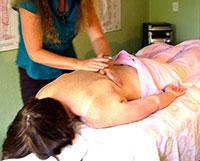What is Physiotherapy?
The image that comes to mind for most people when you mention physiotherapists is someone running onto a sports pitch to treat an injuried player. This however is a very small part of who and what physiotherapists are. Physiotherapy is used in many settings and fields of medicine. In today’s climate of austerity, in order to justify our efficacy and cost effectiveness we have had to undertake research within our profession and ask questions of ourselves as to the effectiveness and role of our profession.
- Clinical research
- Is physiotherapy scientific?
- What is wrong with self-healing?
- Physiotherapy and massage
 Clinical research
Clinical research
Clinical research in the field of physiotherapy is as important to the profession as it is to any other in the medical field. Physiotherapists rely on information from such research to augment the knowledge they have already gained through their university education and continuing education courses.
Physiotherapy programs are now using what is called “evidence-based therapy practice” as the foundation for their treatments. This is a combination of scientific research, clinical reasoning and the individual’s goals and needs. Clinical research helps the practitioner keep up to date with the latest in practice methods, technology and opportunities.
It is now mandatory to maintain a level of continuing professional development in order to remain registered with the Health and Care Professions Council. Armed with the knowledge gained from clinical research, a physiotherapist can demonstrate that the methodology employed has been tested empirically, subjected to peer review and has been accepted within the rehabilitation community.
Contact Us
 Is physiotherapy scientific?
Is physiotherapy scientific?
As a science-based practice, physiotherapy uses facts, theories and hypotheses and tests them against available data. Various recognised and validated tests are used to assess a patient’s muscle strength and range-of-motion. The profession itself has its roots in medical science. Physicians like Hippocrates and Galenus are believed to have been the first practitioners of physiotherapy. These scholars employed techniques such as massage, hydrotherapy and manual therapy. The mere idea of physicians practicing physiotherapy is enough to brand it a science. However, there is further proof.
Physiotherapy aims at promoting, restoring and maintaining physical, psychological and emotional well being. Physiotherapy treatments are formulated after extensive research and observations before being implemented, and the profession is subjected to strict regulation by various governing bodies. Physiotherapists have come to rely more and more on evidence-based practice to ensure that outcomes are spread throughout the profession and are not just the domain of a select few. Physiotherapists undergo years of rigorous training before they can become licensed to practice, with a large proportion going on to further post graduate study.
Areas of practice include paediatrics, geriatrics, orthopedics, neurology, mental health, women’s health, palliative care and others. Physiotherapists form part of the rehabilitation team in clinics, hospitals, nursing homes and other settings where health care is practiced.
At the beginning of your treatment, your physiotherapist sets goals and objectives that are measurable and achievable within the scope of your condition and your needs. There is no guesswork involved. Your progress is documented in quantifiable terms at regular intervals and this is reviewed with you and your physiotherapist. When you visit a physiotherapy clinic you are placing yourself in the hands of a trained professional dedicated to making sure you receive not just the best possible care, but the best scientific outcome. Why not come in and see us at Platinum Physiotherapy and decide for yourself whether physiotherapy is scientific or not?
Contact Us
 What is wrong with self-healing?
What is wrong with self-healing?
Nothing. The human body has an amazing capacity for healing itself.
In physiotherapy we assist the body to heal itself without the use of drugs. This is necessary because after the tissue has healed or pain and swelling have disappeared, you may find that your mobility, flexibility, strength and/or function is impaired.
Why self-healing is often not enough:
- Normal blood flow is dependent on normal muscle activity, which means more than just wiggling the toes or fingers
- The limb should be moved either passively or actively through the maximum available range-of-motion.
- Scar tissue formation that takes place during healing causes restriction of movement and loss of flexibility in joints.
- Pain from the trauma leads to overprotection of the affected part which can lead to contractures. Therefore, the sooner the pain is treated and exercises begun, the sooner active movement can be restored.
Without physiotherapy, strength may be slow to return because the patient lacks the knowledge and skill to perform the types of movement necessary to restore strength.
Contact Us
 Physiotherapy and massage
Physiotherapy and massage
Although when physiotherapy was in its infancy, it was massage therapists that formed the majority of practitioners, we have moved forward and developed massively as a profession. Physiotherapy is a science-based profession that focuses on correcting movement dysfunction.
Physiotherapists may employ massage techniques in treating their patients but this forms only a small portion of our scope of practice.
Pain, stiffness, trigger points, muscle tension and other conditions often respond well to massage along with exercise to increased flexibility.




![axa_ppp_logo[1]](https://www.platinumphysio.co.uk/wp-content/uploads/axa_ppp_logo1.gif)

![cigna[2]](https://www.platinumphysio.co.uk/wp-content/uploads/cigna2.png)